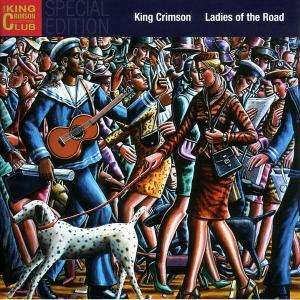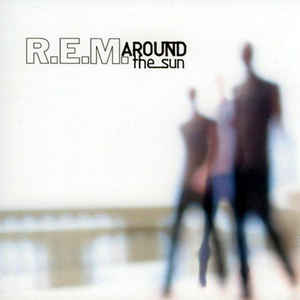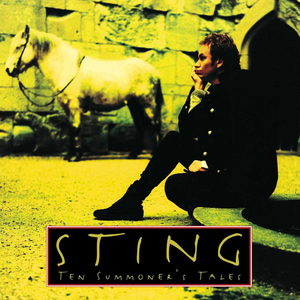It had been a whole three years since his last double album, and Frank pulled out all the stops for
Uncle Meat. This sprawling collection covers every trick in his bag thus far, including intricate instrumental compositions, doo-wop, social commentary, field recordings and extended jamming. The Mothers had expanded over the years, now employing two drummers, two keyboard players (one of whom doubled on horns), three other horn players, a bass player and the occasional extra guitarist and percussionist.
“Uncle Meat: Main Title Theme” is a piece that would surface throughout Zappa’s lifelong “classical” experiments; here it gets much of its sound from the vibraphone driving the melody, matched by a snare for the first minute or so. An abrupt departure for harpsichord sets up the first spoken piece, one of many under the moniker of Susie Creamcheese. “Nine Types Of Industrial Pollution” shows his love of all drums while he solos for six minutes on top. The brief “Zolar Czakl” sounds like the “Main Title Theme” given the Lumpy Gravy treatment, before the first actual song arrives in the form of “Dog Breath”, presenting the same verse sung three times and three ways before the tightly edited and overdubbed section described in the liner notes. (Fans of Prince’s Parade album will recognize some elements here.) “The Legend Of The Golden Arches” is a melody that will appear again. Suzy sets up a snapshot of the Mothers playing “Louie Louie (At The Royal Albert Hall)”. As that descends into chaos, “The Dog Breath Variations” presents a more placid reading of that tune.
“Sleeping In A Jar” is extremely brief, despite being a popular concert inclusion. “The Uncle Meat Variations” seems to continue the title theme with sped-up vocals, then shifts to a surf instrumental borrowing from Raymond Scott’s “Powerhouse”. “Electric Aunt Jemima” is another warped doo-wop song over before we know it. Two versions of “King Kong”—one a “Prelude”, the other an illustration of Ian Underwood’s debut with the band—frame “A Pound For A Brown On The Bus”, a sped-up take of that melody heard on side one.
“Mr. Green Genes” puns on the Captain Kangaroo character with more skewering of organic hippie culture. Its majesty will be revealed in due time. “We Can Shoot You” is a mysterious mix of percussion and horns, leading into a secret recording of a band argument, answered by the nasty doo-wop of “The Air”. “Project X” is another mysterious instrumental, with a simple acoustic guitar figure underneath dueling marimbas and horns, switching halfway to a keyboard-heavy ramble that could be soundtrack music. “Cruising For Burgers” ends the side with another poke at teenage good times.
After being hinted at earlier in the album, a lengthy “King Kong” takes up all of side four, beginning with the theme as shown in the booklet, and continuing under solos on electric piano and two saxophones, edited onto a live performance. As with the album as a whole, there’s a lot going on, and if you have the patience for it, it will grow on you. Like hair.
The cover states that the Uncle Meat album was supposed to accompany a film left incomplete because they ran out of money, and it wasn’t until 1987 that he made a version available on VHS. The concurrent Rykodisc CD presented a slightly remixed version of the album, with the added distraction of what Zappa fans have come to call “penalty tracks” (as opposed to “bonus tracks”). These include two excerpts of dialogue from the film totaling 40 minutes, split up by a 1982 composition “sung” by an Italian journalist in his native language. Only after all that does “King Kong” appear, indexed between each of the parts as listed on the cover. It’s a shame, too, because the original album could easily fit on a single CD. (The 1995 and 2012 revamps kept the same order, with sides one through three on one disc, and the penalty tracks plus “King Kong” on the other.)
The original vinyl mix didn’t make it to an official CD until 2016, as the fifth release of the ongoing Project/Object series.
Meat Light indeed presents the album all on one disc, along with what purports to be its “original sequence” on a second disc and the first part of a third. Besides having most of the tracks in a different order, some of them are in different edits, along with previously unheard live jams, some more spoken sections, and six minutes of Frank and crew getting yelled at by police for excessive noise. The remainder of the third disc is filled with further outtakes, alternate mixes, and even a live version of the title track.
The Mothers Of Invention Uncle Meat (1969)—3½
1987 Rykodisc CD: same as 1969, plus 3 extra tracks
Zappa/Mothers Meat Light (2016)—3½








:format(jpeg):mode_rgb():quality(90)/discogs-images/R-1868919-1288145511.jpeg.jpg)

:format(jpeg):mode_rgb():quality(90)/discogs-images/R-3755493-1472075844-1628.jpeg.jpg)

